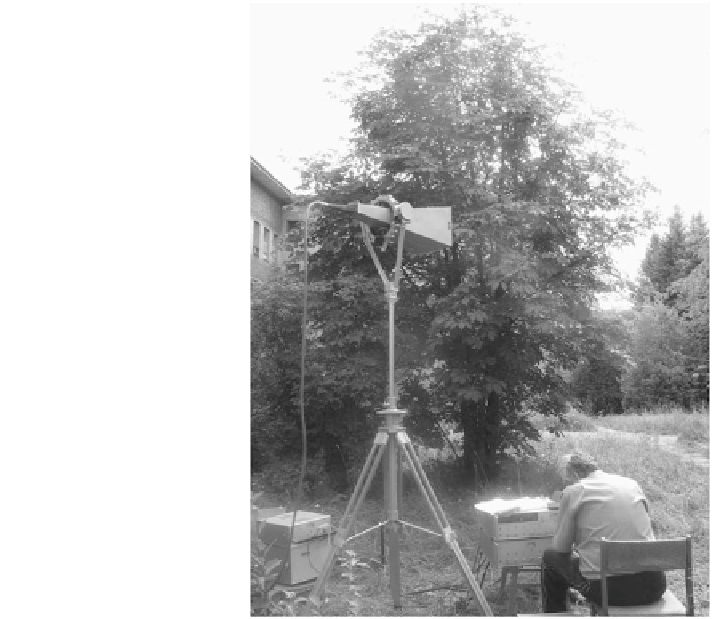Geoscience Reference
In-Depth Information
Fig. 8.28 In situ
measurements of attenuation
of electromagnetic waves by
vegetation canopies in the
100
-
1,000 MHz frequency
band (Chukhlantsev 2006)
8.7 Links Between Experiments, Algorithms, and Models
Field observations are the initial stage to determine the important properties of the
vegetation cover. Many problems arise in providing the model descriptions of
biological and physical processes, which operate on different timescales. The tasks
of describing EMW attenuation by the vegetation cover have timescales ranging
from less than a second to hours or days and also have various spatial scales.
Consequently, the parametrical description of the EMW attenuation by the vege-
tation cover calls for an enormous number of experimental observations, the
planning of which depends on the model type and the vegetation component under
investigation. That is why the effective synthesis of the
final results into given
space-time scales may be realized by the application of GIMS-technology. This
gives the opportunity to solve the problem of scaling the soil-vegetation-atmo-
sphere model and to describe the radiative transfer processes on a scale from that of
individual plants or small plots to large-scale biomes.
As mentioned above, the satellite data can be used to calculate many parameters
of the vegetation cover, including unstressed stomatal conductance, photosynthetic

Search WWH ::

Custom Search